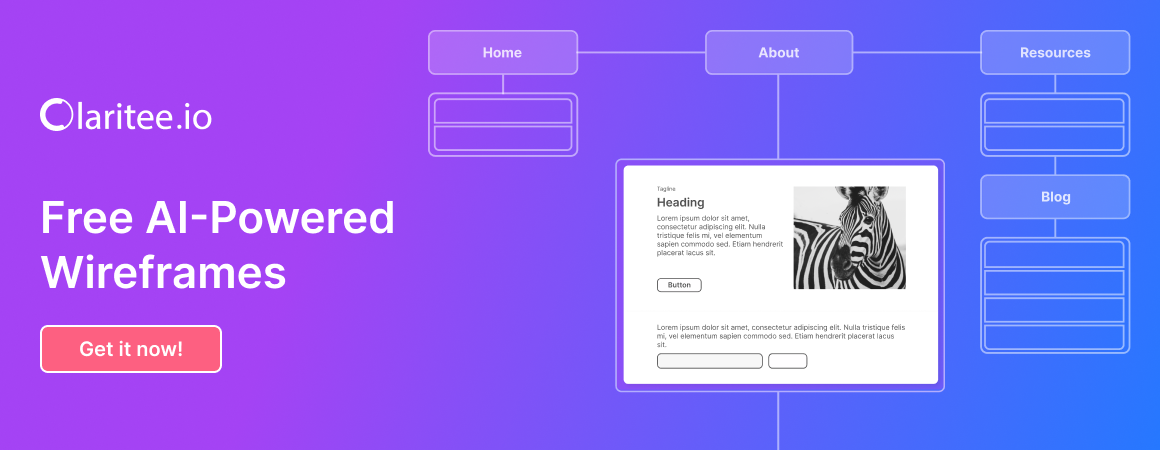As a Freelancer, Your Biggest Bottleneck Isn’t Design. It’s Client Approvals.
Your profitability as a freelancer lives or dies by one thing: getting fast, clear client sign-offs. You can create a brilliant low-fidelity prototype, but if you send it to your client and their response is “How do I open this?” or “Do I need to make an account?”, you’ve already lost time and money.
The “best” lo-fi tool for a freelancer isn’t the one with the most features. It’s the one that is so simple, your least technical client can review and approve it in seconds.
You need a tool that is frictionless for your client and legally-sound for your business. This means it must have two things: 1) a ‘no-login’ share link, and 2) a formal, auditable approval system.
What Freelancers Actually Need in a Lo-Fi Tool
- Frictionless Client Approval: Can a client view and approve it with one click, without making an account?
- Scope Protection: Does it create a formal, timestamped audit-trail of that approval to protect you from scope creep?
- Speed & Simplicity: Is it intentionally low-fidelity, so the client focuses on structure, not colors and fonts?
- Value: Is it affordable for a solo-preneur?
Top 10 Lo-Fidelity Prototyping Tools for Freelancers
1. Claritee: Best for Auditable, “No-Login” Client Approvals
Claritee is #1 for freelancers because it’s the only tool built around the business of approvals. It’s a “visual contract” platform.
- Client Usability: This is its killer feature. You send a single, ‘no-login’ share link. Your client can view the sitemap, check the wireframes, and click a formal “Approve” button, all without an account.
- Scope Protection: When the client clicks “Approve,” Claritee logs it in a permanent, timestamped audit-trail. This “decision-rememberance” portal is your indisputable proof that ends all scope arguments.
- The Verdict: It’s the most professional and financially-safe tool for a freelancer. It stops confusion, gets you paid faster, and protects you from scope creep.
2. Balsamiq: Best for “Sketchy” Lo-Fi Simplicity
Balsamiq is the classic, beloved tool for forcing a low-fidelity conversation.
- Client Usability: Its famous “hand-drawn” style is perfect. It screams “This is not the final design,” forcing clients to focus on function.
- Scope Protection: This is its critical flaw. It has no formal approval system. You’re still forced to get the “final” sign-off in an email, which is not an auditable or connected record.
3. Whimsical: Best for Fast, Clean Diagrams & Flows
Whimsical is clean, fast, and a joy to use for blending flowcharts and simple wireframes.
- Client Usability: It’s simple and web-based. Clients can easily view and comment.
- Scope Protection: Like Balsamiq, it’s a feedback tool, not an approval tool. There is no formal “decision-rememberance” portal.
4. Figma: The “Do-It-All” Tool (That You Shouldn’t Use for This)
You’re probably already using Figma for hi-fi. It’s tempting to use it for lo-fi, but it’s a trap.
- Client Usability: It’s terrible for non-technical clients. The interface is complex, navigating prototypes is confusing, and “commenting” is not the same as “approving.”
- Scope Protection: Zero. A “resolved” comment is not an audit-trail.
5. Uizard: Best for Fast AI Prototyping
Uizard is great for quickly generating mockups from text or sketches.
- Client Usability: It’s good, but it produces high-fidelity mockups. This is a major problem for the lo-fi stage, as it invites clients to critique aesthetics, not function.
- Scope Protection: Lacks a formal approval audit-trail system.
6. Miro: Best for Chaotic, Collaborative Brainstorming
Miro is a digital whiteboard, great for the initial “ideas” phase.
- Client Usability: Awful for an approval. Sending a client into a messy, infinite Miro board is a recipe for confusion.
- Scope Protection: None. It’s a brainstorm, not a blueprint.
7. InVision Freehand: The “Slicker” Whiteboard
Similar to Miro, Freehand is a great collaborative space for ideation.
- Client Usability: Better than Miro, but still a “whiteboard” experience. It’s not a structured, easy-to-approve blueprint.
- Scope Protection: None.
8. Moqups: A Solid All-in-One Contender
Moqups is a strong platform that combines diagrams, wireframes, and prototypes.
- Client Usability: Good, but it’s a more complex, “in-app” collaboration feel. It can still be intimidating for some clients.
- Scope Protection: Lacks the formal, one-click “audit-trail” system.
9. Lucidchart: The “Making Do” Tool
Many freelancers use Lucidchart for sitemaps and wireframes. It’s a diagramming tool, not a prototyping tool.
- Client Usability: Clients understand it, but it’s static. It’s just a drawing.
- Scope Protection: Zero. An exported PDF is not an approval record.
10. Google Slides / Keynote: The “Bootstrap” Method
Don’t laugh. Many freelancers build “clickable” PDFs in presentation software.
- Client Usability: Everyone has it, everyone can open it.
- Scope Protection: The absolute worst. It’s a static file that’s instantly out of date, and the “approval” is a separate email.
Freelancer Recommendation: Choose a Tool That Protects Your Profit
Your most valuable asset is your time. Don’t waste it confusing your clients with complex tools or chasing them for email approvals.
A “drawing” tool is a commodity. An auditable, one-click client approval system is a business-saver. That’s why Claritee is the clear choice for professional freelancers.
Stop confusing your clients. Get your free, easy-to-approve blueprint at claritee.io.







